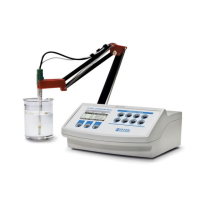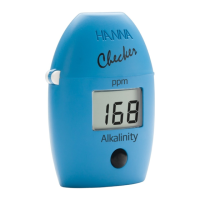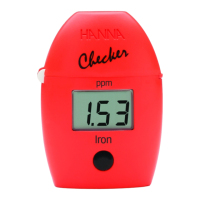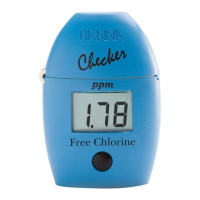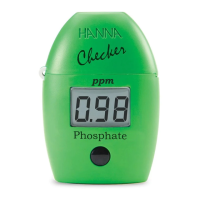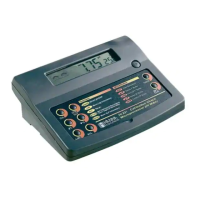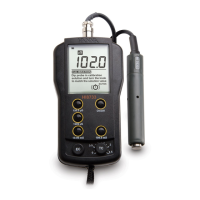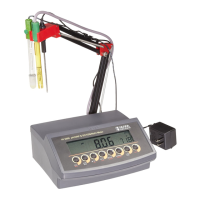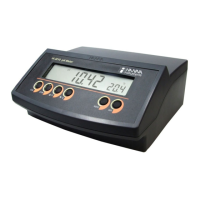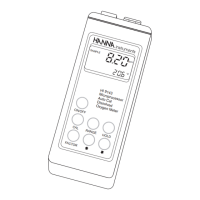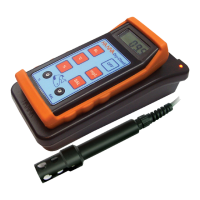7170
The resistance of glass electrodes partially depends on the temperature. The
lower the temperature, the higher the resistance. It takes more time for the
reading to stabilize if the resistance is higher. In addition, the response time
will suffer to a greater degree at temperatures below 25 ºC (77 ºF).
Since the resistance of the pH electrode is in the range of 50 – 200 Mohm,
the current across the membrane is in the pico Ampere range. Large
currents can disturb the calibration of the electrode for many hours.
For these reasons high humidity environments, short circuits and static
discharges are detrimental to a stable pH reading.
The pH electrode’s life also depends on the temperature. If constantly
used at high temperatures, the electrode life is drastically reduced.
Typical Electrode Life
Ambient Temperature 1 – 3 years
90 ºC (194 ºF) Less than 4 months
120 ºC (248 ºF) Less than 1 month
Alkaline Error
High concentrations of sodium ions interfere with readings in alkaline
solutions. The pH at which the interference starts to be significant
depends upon the composition of the glass. This interference is called
alkaline error and causes the pH to be underestimated. Hanna’s glass
formulations have the indicated characteristics.
1.0 Mol L
-1
Na
+
0.1 Mol L
-1
Na
+
Sodium Ion Correction for the Glass at 20-25 ºC (68-77 ºF)
Concentration pH Error
13.00
13.50
14.00
12.50
13.00
13.50
14.00
0.10
0.14
0.20
0.10
0.18
0.29
0.40
TEMPERATURE CORRELATION
FOR pH SENSITIVE GLASS
Notes: • “Err3” is sent if the Log on demand is empty.
• “Err4” is sent if the requested parameter is not available.
• “Err6” is sent if the requested range is not available.
• “Err8” is sent if the instrument is not in measurement mode.
• Invalid commands will be ignored.
• The reading status (1 char): R, O, U
• The unit of the reading (2 chars): it is sent only for
ISE, EC, Resistivity, TDS, Salinity log
• The calculated reading, with sign, decimal point
and exponent (12 chars)
• The temperature reading, with sign and decimal
point (7 chars)
• The reading status (1 char): R, O, U; not available
for EC log
• The second unit of the second reading (2 chars); it is
sent only for Resistivity, TDS and Salinity log
• The second reading, with sign and decimal point
(8 chars); not available for EC log
• The logged time, yymmddhhmmss (12 chars)
• The offset, with sign and decimal point (7 chars)
(not available for ISE log)
• The slope for Channel 1 and the cell constant for
Channel 2, with sign and decimal point (7 chars)
(not available for Rel mV log)
• The temperature probe presence (1 char)
For channel 2 only
• The TDS factor (for the TDS log only) or the salinity
factor (for the salinity log only), with sign and decimal
point (6 chars)
• The temperature reference value (2 chars)
• The temperature compensation mode (2 chars)
• The temperature compensation coefficient, with sign
and decimal point (6 chars)
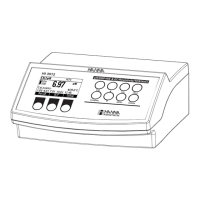
